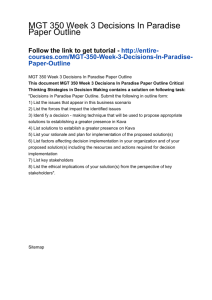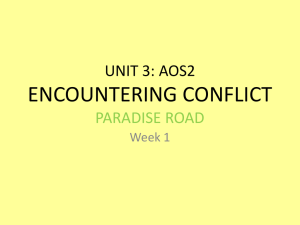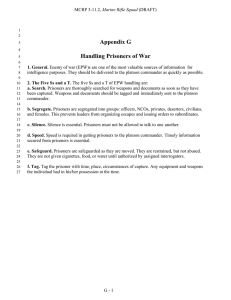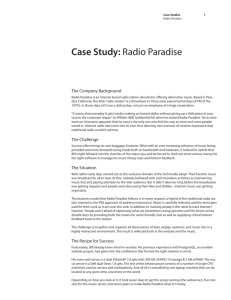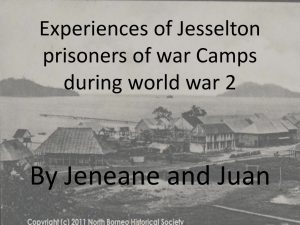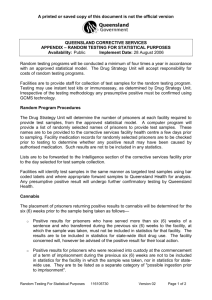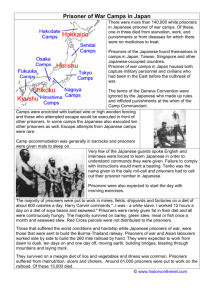Encountering - English-Units 3 & 4-BCH
advertisement
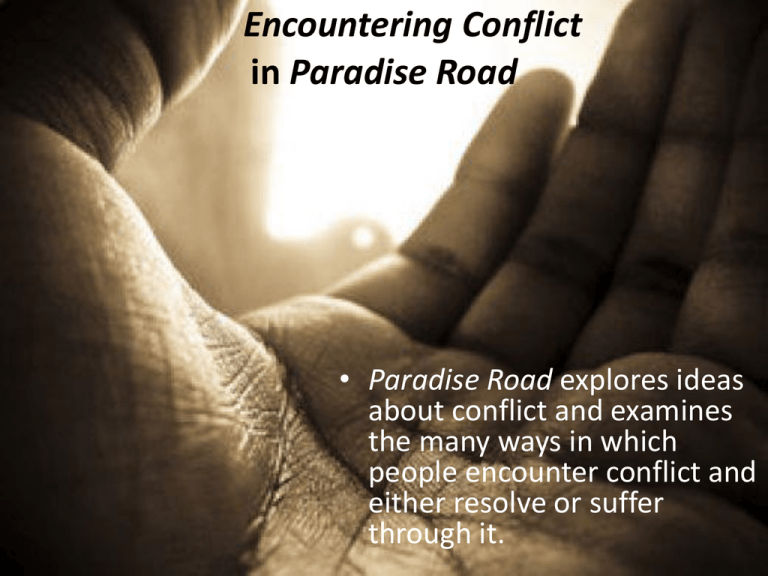
Encountering Conflict in Paradise Road • Paradise Road explores ideas about conflict and examines the many ways in which people encounter conflict and either resolve or suffer through it. The key types of conflict explored include: • The historical setting of the film is the global conflict of World War II. This conflict is a military one, fuelled by political conflicts which, in 1939, finally erupted into the violent conflict of global warfare. • The geographical setting is the tropical island of Sumatra, where the prisoners are often in conflict with the hostile physical environment. • Compounding the political conflict are deeply embedded cultural and racial tensions. As Mrs Tippler points out, the people the Japanese most dislike are ‘Europeans, prisoners and women’. The guards’ treatment of the women highlights the cultural divide between the Western female captives and their Asian male captors. • Inner (personal) conflict is also encountered by the women who are often pushed to breaking point by the cruelty of the Japanese soldiers, such as when they are forced to witness the injustice of Wing’s execution in silence. The prisoners sometimes find themselves experiencing interpersonal conflict as the hardships they encounter make them edgy and vulnerable. Workbook questions- Remember, the answers are your opinion but use Paradise Road and other external examples to support your answers • What are the consequences of conflict for individuals, communities and society as a whole? • Can conflict be the catalyst for positive social or individual changes? • Does inner conflict lead to external conflict? • Will cultural differences always result in conflict? • Why do acts of cruelty seem to be part of wars that arise from political conflicts?



